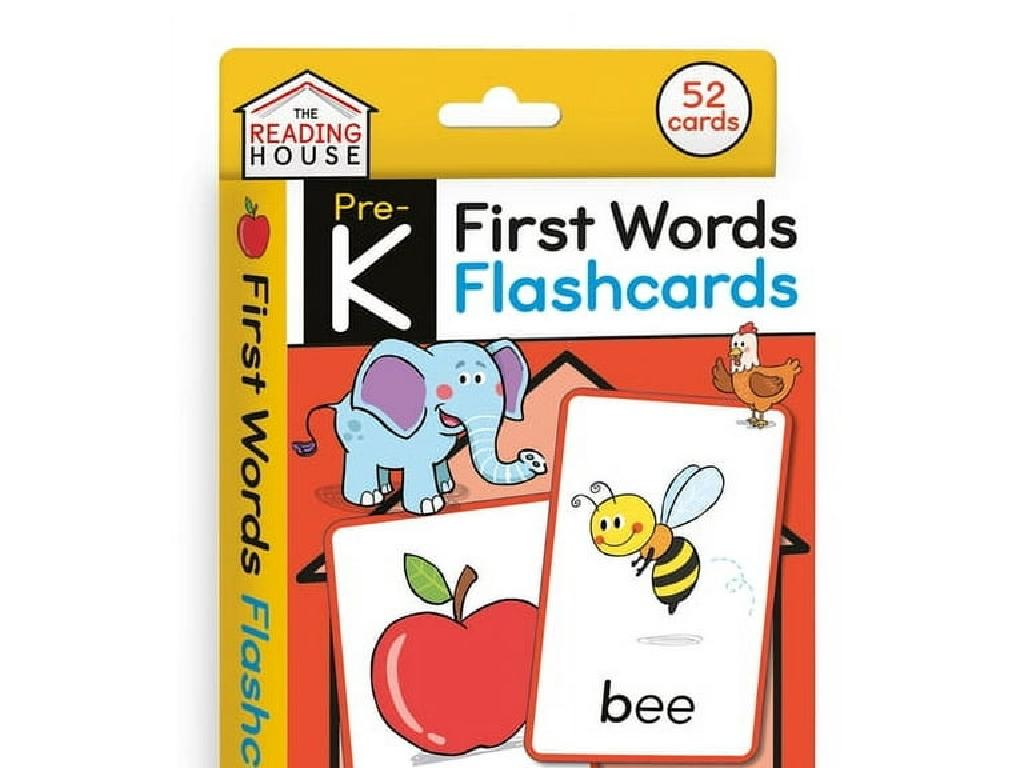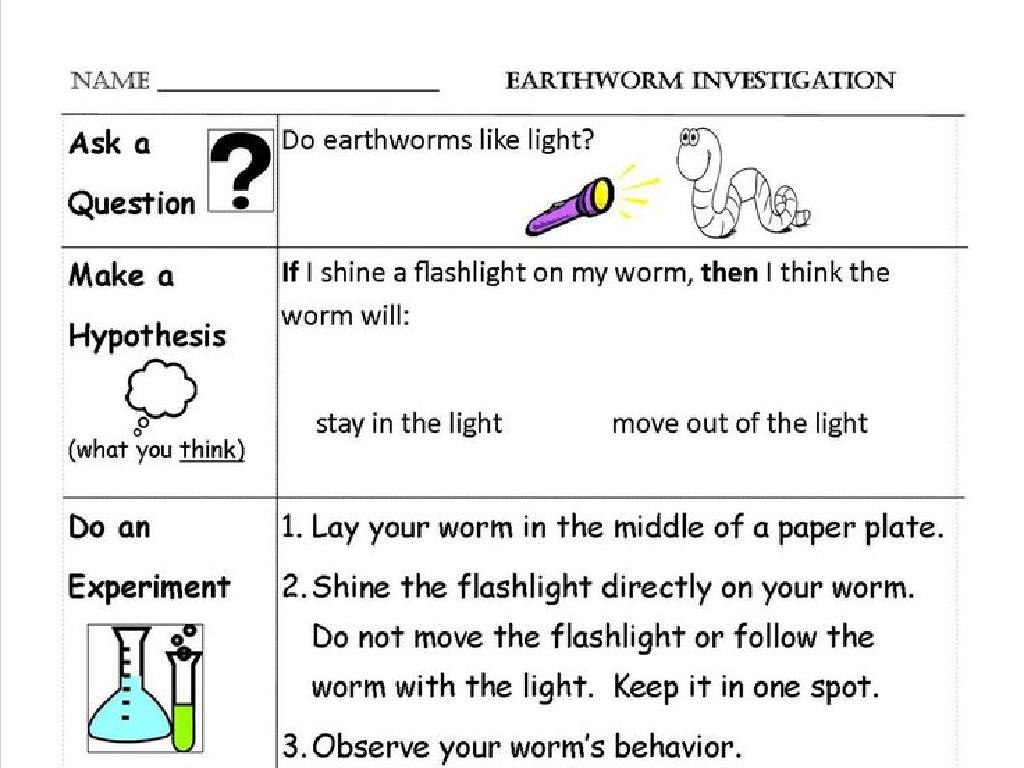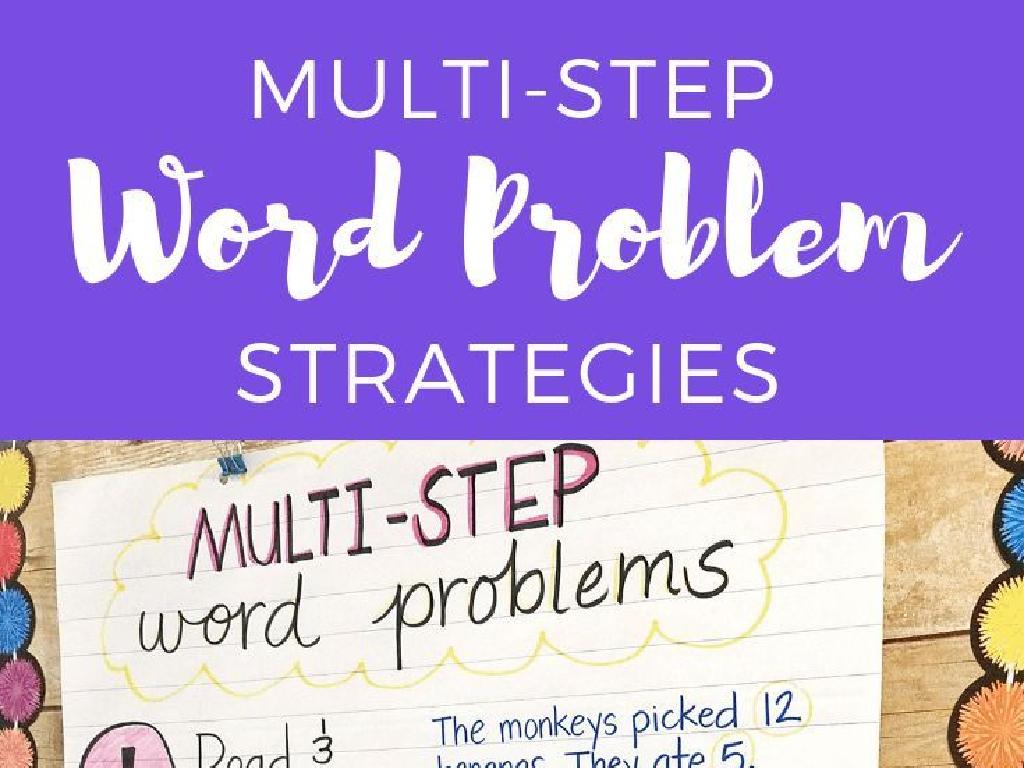Form And Use Comparative And Superlative Adjectives
Subject: Language arts
Grade: Seventh grade
Topic: Adjectives And Adverbs
Please LOG IN to download the presentation. Access is available to registered users only.
View More Content
Comparative and Superlative Adjectives
– Define adjectives and adverbs
– Adjectives describe nouns; adverbs modify verbs, adjectives, or other adverbs.
– Comparative vs. Superlative adjectives
– Comparative adjectives compare two things (e.g., taller, smarter). Superlative adjectives compare three or more things (e.g., tallest, smartest).
– The role in language
– They enhance communication by allowing us to express degrees of comparison.
– Crafting sentences with impact
– Use them to make your writing more descriptive and precise.
|
This slide introduces the concept of adjectives and adverbs, focusing on comparative and superlative forms. Begin by defining adjectives and adverbs, explaining their roles in a sentence. Then, differentiate between comparative and superlative adjectives with examples. Discuss why these forms are crucial for effective communication, as they help to compare and emphasize characteristics in more detail. Encourage students to think of examples from their reading or daily life. Finally, illustrate how using these adjectives can make their writing more vivid and engaging. Provide exercises where students convert simple sentences into ones with comparative and superlative adjectives to practice.
Exploring Adjectives
– Define an adjective
– A word that describes a noun or pronoun
– Adjectives in sentence examples
– ‘The quick brown fox jumps over the lazy dog’ – quick, brown, lazy
– Activity: Find adjectives in a paragraph
– Read a paragraph and underline all the adjectives you find
|
Begin the lesson by defining an adjective as a word that modifies or gives more information about a noun or pronoun, such as size, color, shape, or feeling. Provide clear examples of adjectives within sentences to illustrate their use. For the class activity, provide a short, engaging paragraph and instruct students to identify and underline all the adjectives. This will help them recognize adjectives in context and understand their role in adding detail to writing. After the activity, discuss the adjectives they found and why they are important in the sentences. This exercise will enhance their descriptive writing skills and comprehension.
Exploring Adverbs
– Define an adverb
– A word that modifies a verb, adjective, or other adverb
– Adverbs in sentence examples
– ‘He ran quickly.’ Quick is the adverb modifying ran
– Activity: Identify adverbs
– Find adverbs in a list of words
– Understanding adverb usage
|
This slide introduces the concept of adverbs to the students, explaining their role in a sentence as modifiers of verbs, adjectives, or other adverbs. Provide clear examples of adverbs within sentences to illustrate their use. The activity is designed to help students identify adverbs from a provided list, reinforcing their understanding through practical application. Teachers should prepare a diverse list of words including adverbs and other parts of speech for the activity. Encourage students to explain why a word is an adverb and what it is modifying in the sentence. This exercise will enhance their ability to recognize and use adverbs correctly in their writing.
Comparative Adjectives
– Forming comparative adjectives
– Add ‘-er’ to short adjectives, e.g., ‘short’ becomes ‘shorter’
– ‘More’ vs. ‘-er’ usage
– Use ‘more’ for longer adjectives, e.g., ‘beautiful’ becomes ‘more beautiful’
– Example: ‘taller’
– ‘Tall’ becomes ‘taller’ when comparing two things
– Example: ‘more intelligent’
– ‘Intelligent’ needs ‘more’ as it’s a long adjective
|
This slide introduces the concept of comparative adjectives, which are used to compare differences between two objects. Teach students the rule of thumb for forming comparatives: generally, add ‘-er’ to one-syllable adjectives and use ‘more’ for adjectives with two or more syllables. Provide clear examples to illustrate the point, such as ‘tall’ becoming ‘taller’ and ‘intelligent’ requiring ‘more’ to become ‘more intelligent’. Encourage students to come up with their own examples and understand when to use ‘-er’ and when to use ‘more’. This will help them in writing and speaking more descriptively.
Forming Superlative Adjectives
– Creating superlative adjectives
– Add ‘-est’ to short adjectives or ‘most’ for longer ones
– Use ‘most’ and ‘-est’ correctly
– ‘Short’ becomes ‘shortest’, ‘beautiful’ becomes ‘most beautiful’
– Compare ‘tallest’ and ‘most intelligent’
– ‘Tallest’ is for height, ‘most intelligent’ for smarts
– Practice with diverse examples
– Find examples in books, ads, and conversations
|
This slide introduces students to the concept of superlative adjectives, which are used to describe the extreme quality of one item in a group. Teach students the rule of thumb for forming superlatives: generally, add ‘-est’ to one-syllable adjectives, and use ‘most’ with adjectives that are three syllables or longer. Provide clear examples to illustrate the difference, such as ‘tallest’ for simple adjectives and ‘most intelligent’ for complex adjectives. Encourage students to practice by identifying superlative adjectives in various texts and everyday language, and to create their own sentences using superlatives to describe objects or people around them.
Irregular Adjectives: Comparative & Superlative
– Irregular adjective forms
– Not all adjectives follow regular rules
– ‘Good, better, best’ example
– ‘Good’ becomes ‘better’ (comparative) and ‘best’ (superlative)
– Matching activity setup
– Engage with irregular forms
– Learn to recognize and use irregular adjectives
|
This slide introduces students to irregular comparative and superlative adjectives, which do not follow the standard rules of adding ‘-er’ or ‘-est’. Provide examples like ‘good, better, best’ and ‘bad, worse, worst’. The class activity involves matching irregular adjectives to their correct comparative and superlative forms. For the activity, prepare cards with adjectives and their forms mixed up, and ask students to find the correct matches. Possible variations include working in pairs, timed challenges, or creating sentences using the matched adjectives. This will help students familiarize themselves with irregular forms and understand their usage in different contexts.
Mastering Comparative & Superlative Adjectives
– Construct sentences with comparatives
– Use ‘er’ or ‘more’ for comparing two things, e.g., ‘smarter’ or ‘more fun’
– Construct sentences with superlatives
– Use ‘est’ or ‘most’ for the highest degree in a group, e.g., ‘tallest’ or ‘most interesting’
– Recognize and avoid common errors
– Don’t mix ‘more’ with ‘er’ or ‘most’ with ‘est’, e.g., ‘more smarter’ is incorrect
– Practice with examples
|
This slide aims to teach students the correct use of comparative and superlative adjectives within sentences. Emphasize the structure of sentences using ‘er/more’ for comparatives when comparing two items and ‘est/most’ for superlatives when discussing the highest degree among three or more items. Highlight common mistakes to avoid, such as double comparatives or superlatives. Provide ample examples and encourage students to create sentences of their own. As an activity, students could work in pairs to come up with creative comparative and superlative sentences, find examples in their favorite books, or peer-review each other’s work to spot errors.
Class Activity: Crafting Sentences with Adjectives
– Form groups for comparative sentences
– Form groups for superlative sentences
– Create your own comparative sentences
– Use comparative adjectives to compare two things
– Create your own superlative sentences
– Use superlative adjectives to describe the extreme quality of one in a group
|
This activity is designed to reinforce the students’ understanding of comparative and superlative adjectives. Divide the class into small groups and assign each group to come up with creative sentences that use comparative adjectives (e.g., taller, faster) and superlative adjectives (e.g., tallest, fastest). Encourage them to think of real-life examples that are relevant to their experiences. After the groups have created their sentences, have them share with the class to discuss and provide feedback. Possible activities: 1) Comparing two favorite sports, 2) Describing the best day they’ve ever had, 3) Discussing the most interesting book they’ve read, 4) Comparing two video games, 5) Describing the funniest movie they’ve seen.
Quiz Time: Adjective Forms
– Take an individual knowledge quiz
– Identify correct adjective forms
– Look for comparative or superlative forms in sentences
– Explain your choice of form
– Justify the use of ‘taller’ vs. ‘tallest’ in context
– Reflect on the usage rules
|
This slide introduces a quiz activity to assess students’ understanding of comparative and superlative adjectives. Students will individually complete the quiz, identifying the correct form of adjectives within given sentences and explaining their choices. This exercise will help reinforce their knowledge of when to use comparative forms (e.g., ‘taller’) versus superlative forms (e.g., ‘tallest’). The reflection on usage rules will solidify their understanding of the grammar. For the teacher: Prepare a quiz with sentences that require the use of both comparative and superlative adjectives. Ensure there are clear examples that demonstrate the rules for forming these adjectives, including exceptions. After the quiz, review the answers as a class and discuss the reasoning behind each choice to enhance comprehension.
Wrapping Up: Adjectives in Comparison
– Recap: Comparative & Superlative Adjectives
– Comparatives show difference, superlatives show extremes.
– Importance of Accurate Adjective Use
– Precise adjectives enhance clarity in communication.
– Glimpse into Adverbs
– Adverbs modify verbs, adjectives, and other adverbs.
– Engage with Upcoming Lessons
|
As we conclude today’s lesson, it’s important to review the key concepts of comparative and superlative adjectives. Emphasize how these forms help us compare objects and express the highest degree of a quality. Highlight the significance of using the correct form of adjectives to convey clear and accurate information. Provide a brief preview of the next lesson on adverbs, explaining that they serve to modify verbs and adjectives, adding depth to descriptions. Encourage students to be observant of the adjectives and adverbs they encounter in their daily reading and conversations as a preparation for the next class.






